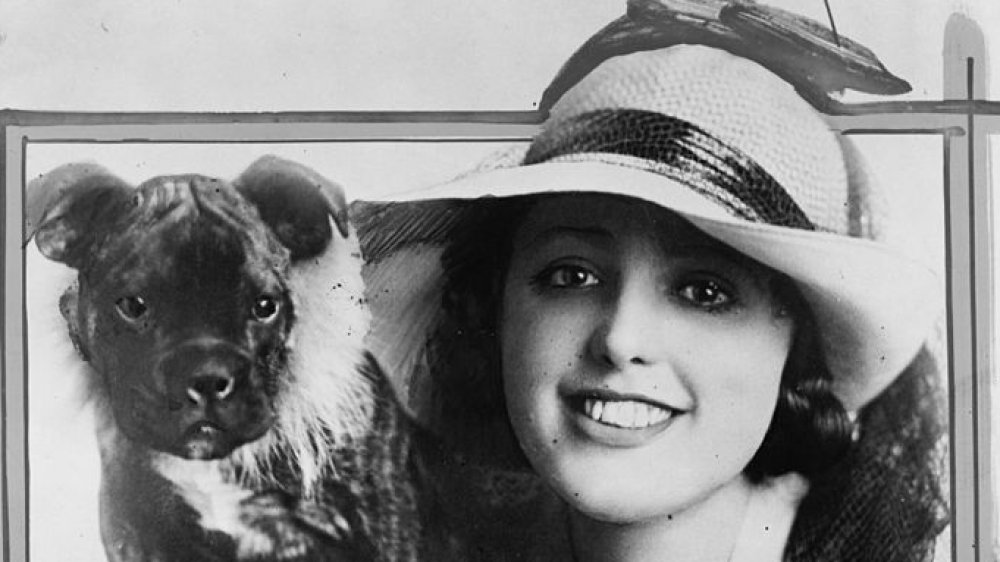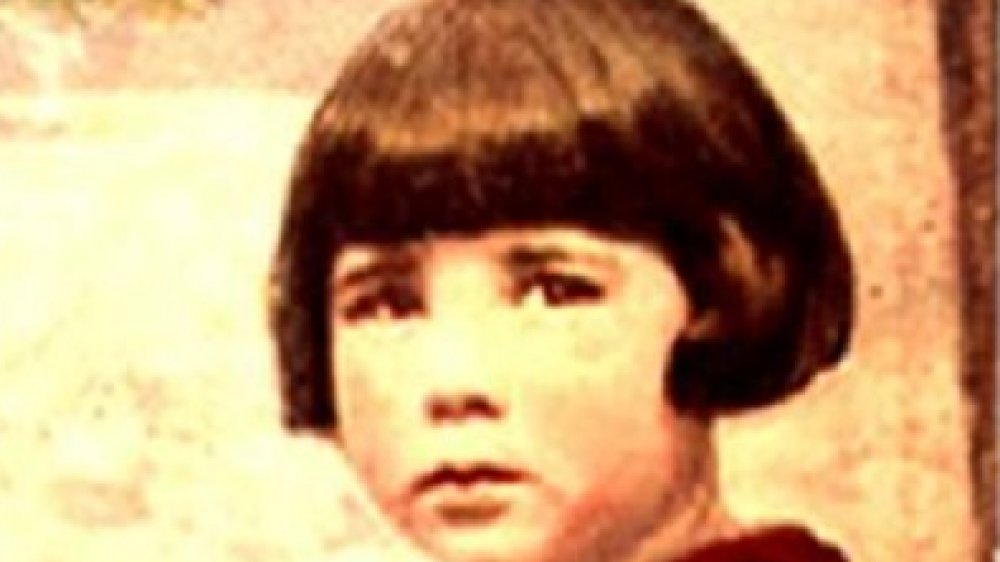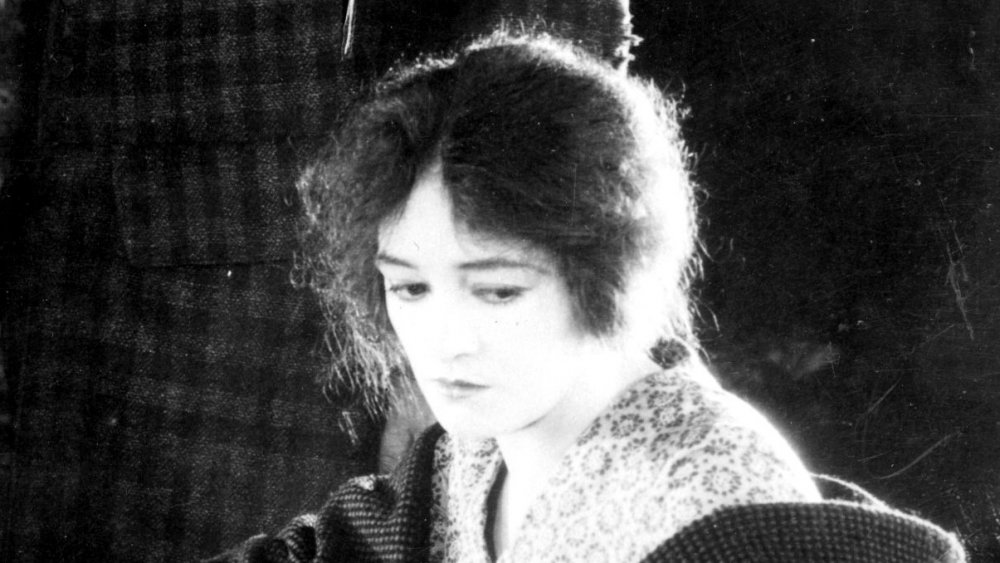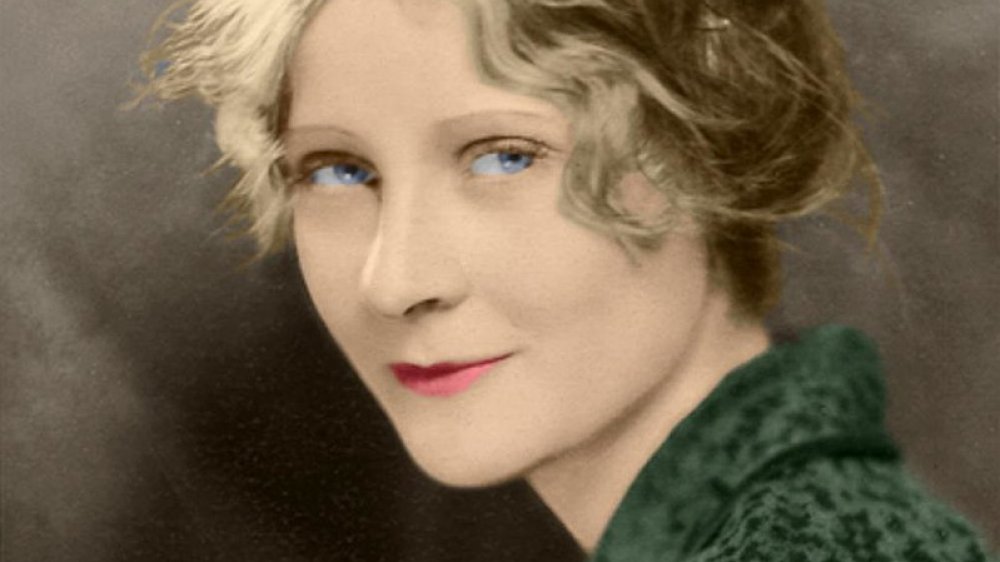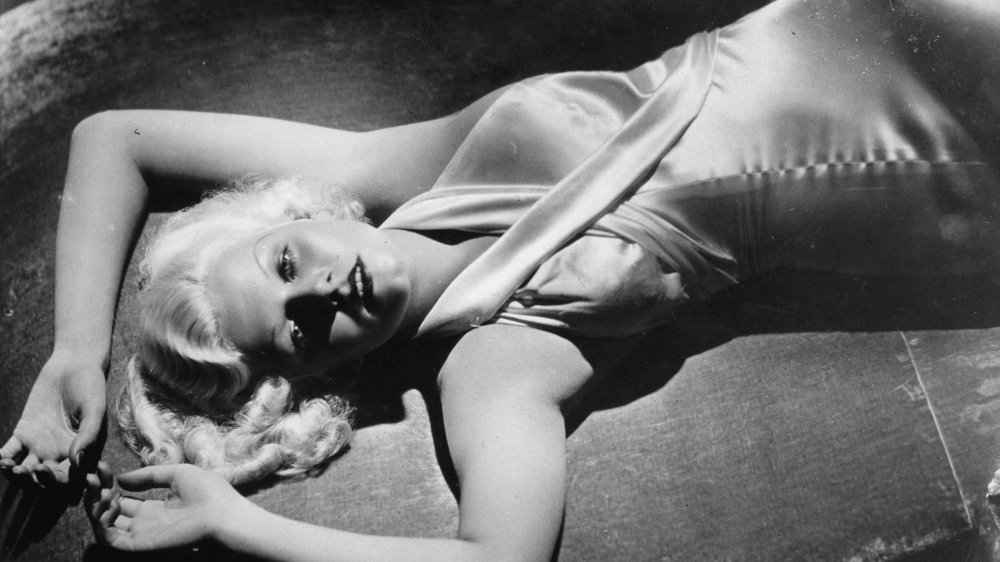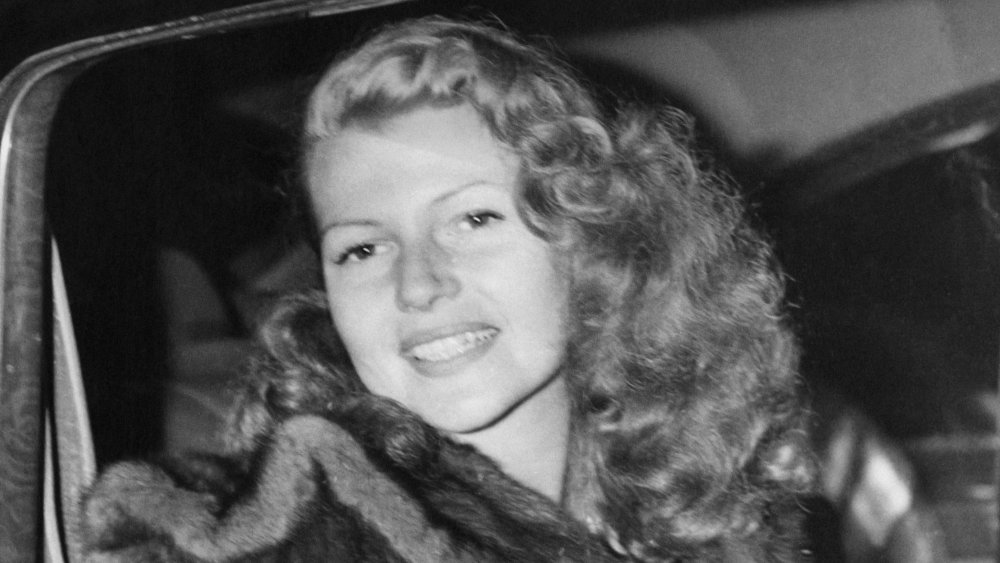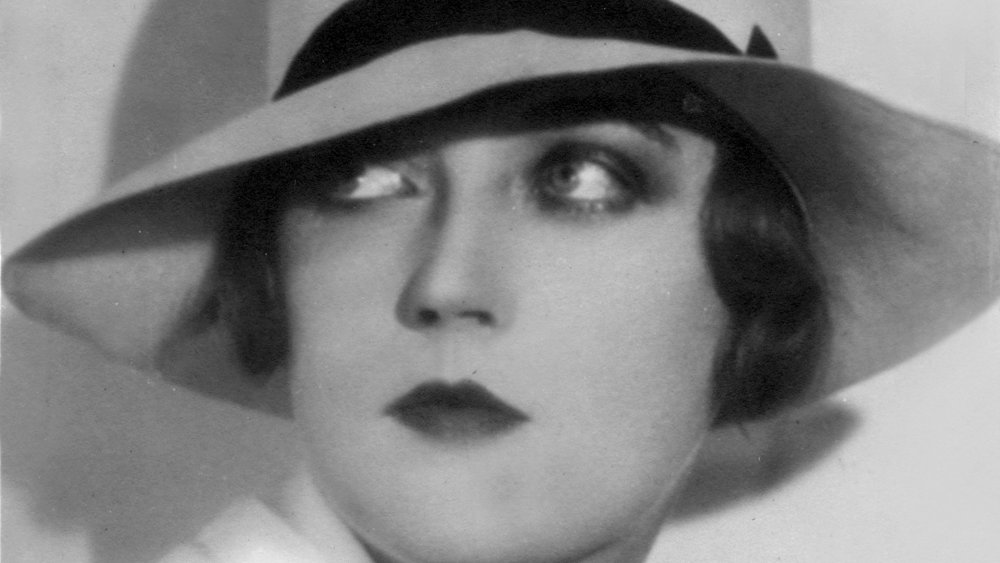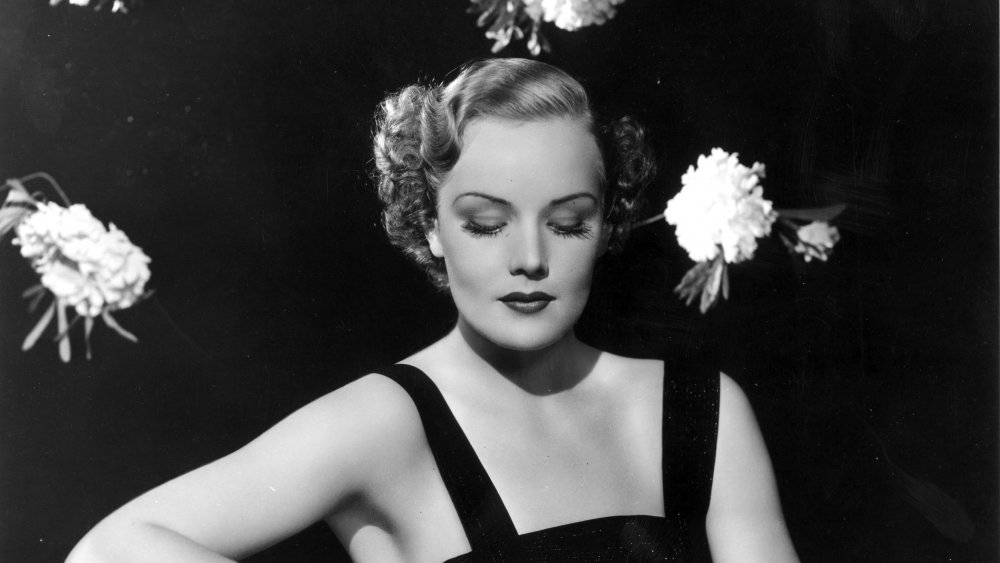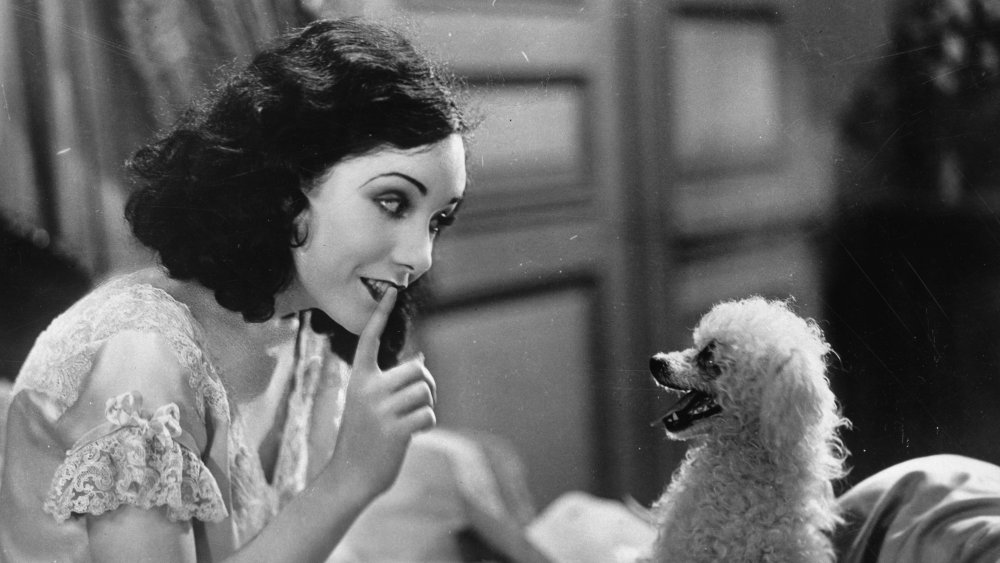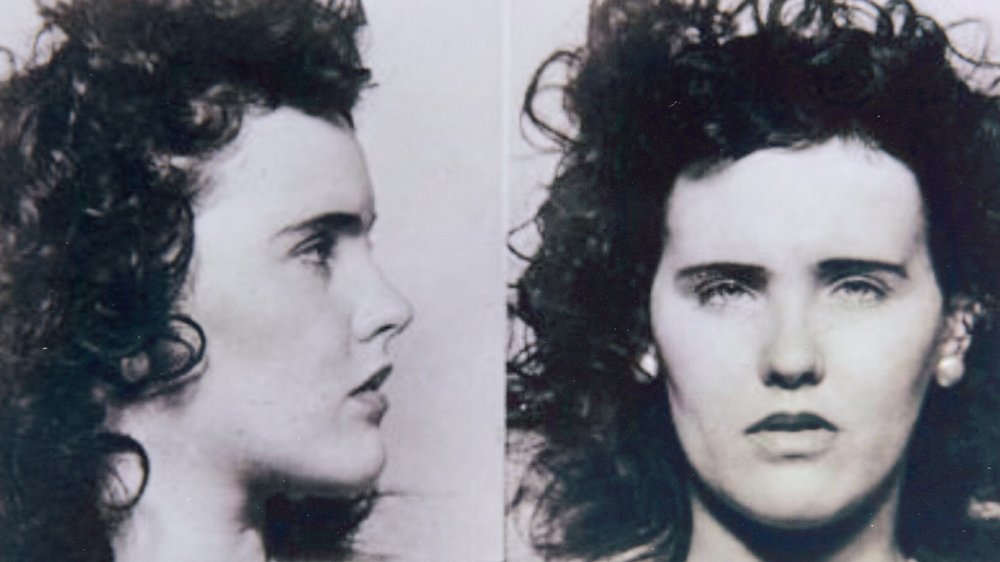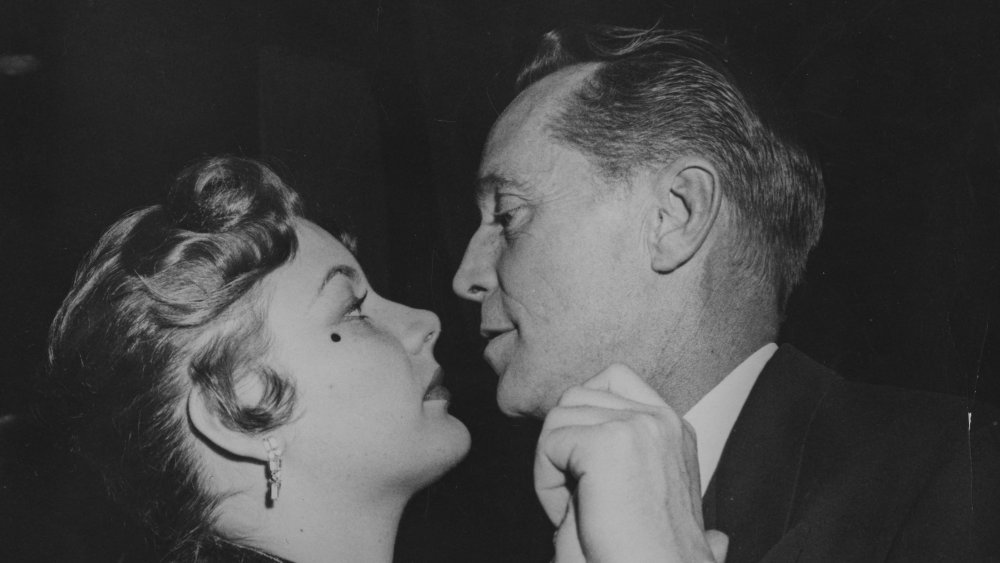Tragic Stories About Old Hollywood's Legendary Actresses
For the starlets of early Hollywood, "Tinseltown" was the place where dreams could come true—at a price. During the Roaring Twenties especially, says 1920's Fashion and Music, Hollywood offered wealth and glamour to the lucky, debauchery and decadence to many, and enough fascination to lure in young, hopeful women from all over America and beyond. These were the starlets of yesteryear, the ones who hoped for fame and fortune.
Unfortunately, the vast majority of girls trying to make it to the big screen met with failure. Unable to return home either by shame or poverty, lots of wannabe stars ended up working menial jobs while waiting for their big break, or turning to more seedy occupations like sex work to make their way. Even those who did make it were still women working in a man's world, where the proverbial "casting couch," according to Variety, often meant sleeping one's way to the top. Adhering to long-term contracts, taking parts they didn't want, and maintaining a certain image was common, says Harper's Bazaar. No wonder actresses were prone to alcoholism, erratic behavior, and sometimes, a bad end. Here are some notable golden girls who led some of the most tragic lives in Hollywood.
Virginia Rappe, a victim of sexual assault?
One of Hollywood's first scandals actually happened in San Francisco. According to Medium, Virginia Rappe was the illegitimate daughter of a chorus girl. When her mother died, the 14-year-old left her native Chicago for San Francisco where she worked designing dresses and modeling. After her first love, Robert Moscovitz, died in a streetcar accident, Rappe moved to Los Angeles and fell in love again—with director/producer Henry Lehrman. By 1921, Rappe had appeared in a number of movies and had won an award for "Best Dressed Girl in Pictures," says Hollywood Forever. Everything was great, until the girl attended a party hosted by actor Roscoe "Fatty" Arbuckle at Frisco's St. Francis Hotel.
Maude Delmont, who Smithsonian identified as a Hollywood "madam and blackmailer," saw Arbuckle approach Rappe. "I've waited for you five years, and now I've got you," he allegedly muttered, pulling Rappe into an adjoining room. Minutes later Rappe was screaming in pain, dying days later from a ruptured bladder. Arbuckle was tried for manslaughter three times, and although Delmont never testified, she talked plenty to the press. Arbuckle was finally acquitted but his reputation and money were gone. Today Virginia Rappe rests in Hollywood Forever cemetery, the truth behind her death unsolved.
Baby Peggy's parents blew more than her money
Child star Baby Peggy lost not only her money, but also her career thanks to her family. Born Peggy-Jean Montgomery in San Diego in 1918, according to IMDb, the expressive little girl with the bobbed black hair was a star by 1920. With some 150 short films and a handful of feature films during her career, she was nicknamed Hollywood's "Million Dollar Baby," as her father negotiated million dollar contracts on her behalf. As her career skyrocketed, according to Hollywood Reporter, Baby Peggy dolls, jewelry, and scads of other memorabilia sold like hotcakes. But the child literally missed out on her early childhood. "I didn't know what a regular kid was," she once said, "because I didn't have any friends."
Baby Peggy's career abruptly ended in 1924 when, Variety reports, her over-greedy father got into a salary dispute with a producer who angrily canceled the child's contract. Next, her parents discovered that her grandfather had stolen all of her money. Peggy tried vaudeville but the family's lavish lifestyle ended after their Wyoming ranch was lost during the Great Depression. After working as a Hollywood extra during the 1930's, Montgomery turned to her true love, writing. "At eight years of age, I was determined to become a writer," she said in 1999. So she did, changing her name to Diana Serra Cary and penning at least five books before she died in February, 2020.
The death of Gladys Brockwell was way too soon
Intelligent and versatile is how Silent Hollywood describes actress Gladys Brockwell, who was born to a struggling chorus girl in the 1890s. Onstage by the age of three, Brockwell appeared in her first movie, The Rattlesnake, in 1913. Ever savvy about her career, she was soon on the payroll at Fox Studios, and began appearing in full-length films exclusively beginning in 1917, according to IMDb. Brockwell's personal life was typical of Hollywood actresses; in 1918 she divorced her husband of three years, Robert Broadwell. "He never took me out anywhere," she told the judge.
Brockwell continued climbing Hollywood's ladder to fame. Her first leading role was Lights of New York in 1928, says Hollywoodland. She had just starred in her last film, The Drake Case, when she took an evening ride with advertising executive Thomas Brennan in 1929. Brennan later explained a cinder had flown in his eye when his car skidded off the road northwest of Hollywood, "plunged 75 feet down an embankment," flipped three times and pinned the pair underneath. Brockwell died on July 2 from massive injuries. Although some newspapers reported she was buried, Find A Grave claims she was cremated and the ashes given to her mother, who lived with her at the time.
Ann McKnight: Murder by husband
Ann McKnight, according to Hollywoodland, was born in Connecticut in 1906. Following her father's death the family moved to Denver, Colorado where they lived with one of Ann's many siblings. They were still there in 1920, according to census records, but Ann and her sister Ada "got the acting bug" and moved to Hollywood in 1927. Although Ada (as Joy McKnight) got a part in the 1928 movie Bitter Sweets, Ann could only find parts as an extra and a few dance gigs "at the local clubs." Ann was working as a drugstore clerk when she married William Burkhart, and abusive drug user and alcoholic, in 1928.
A little over a year after her marriage to Burkhart, Ann McKnight fled to her sister's house and filed for divorce. But the brutal Burkhart tracked her down and lured her in for a supposed reunion. Instead, the drunken Burkhart beat and shot the woman five times, telling a neighbor, "you might think that I am stiff, but my wife is stiffer." He also violated the body. The San Bernardino Sun was among the newspapers who covered Burkhart's hearing, which ended in a guilty charge. Burkhart was executed by hanging in 1932 and is buried in Hollywood Forever cemetery, not far from the body of his murdered wife.
Peg Entwistle, the 'Hollywood Sign Girl'
Peg Entwistle's posthumous moniker stems from her tragic suicide by jumping off the iconic Hollywood sign (although back then it read "Hollywoodland"). Born Millicent Lilian Entwistle in Wales, the actress first came to America with her father, says Harper's Bazaar. Life was not easy. Entwistle's mother died in 1921; her father died in 1922. In 1929, she testified that her husband, Lee Keith, "pulled a handful of hair from her head" and lied when he said he'd never been married before. Following her divorce, Entwistle did well in New York's Theatre Guild but wanted more. "I would rather play roles that carry conviction," she said.
When the Theatre Guild came to California, Entwistle hoped for a screen acting career while living with her uncle to make ends meet, says Hollywood Sign. Meanwhile, she continued appearing in plays and received glowing reviews for her part in one, titled The Uninvited Guest. She finally got a role in the film Thirteen Women in 1932, but when all but 15 seconds of her part were cut from the movie, the actress sunk into a deep depression. Telling her uncle she was going to meet some friends, Entwistle instead climbed up a workman's ladder onto the "H" of the Hollywoodland sign and jumped. It would be two days before her body was found. Her ashes are interred next to her father's in Ohio.
If you or anyone you know is having suicidal thoughts, please call the National Suicide Prevention Lifeline at 1-800-273-TALK (8255).
Jean Harlow, blonde bombshell to frail actress
Long before Marilyn Monroe there was Jean Harlow, the original "blonde bombshell." This story is actually about two women, the first being the actress' mother whose name really was Jean Harlow. Country Living explains that the elder Harlow wanted to be an actress; when that failed, she watched, then pushed, as her daughter became one instead. Young Harlean Carpenter, as she was known as birth, was actually visiting a friend at a Fox Studios when she inexplicably told someone her name was Jean Harlow. Britannica says Mama Jean put her daughter through the Hollywood School for Girls but Harlow, who wasn't initially interested in acting, eloped at the age of 16.
By 1928, young Harlow had changed her mind about being an actress, leaving her husband to appear in an amazing 43 films over nearly a decade (per IMDb). But a second husband died mysteriously in 1932, and at least one of Harlow's affairs with a married man went public. The girl also had suffered from meningitis and scarlet fever as a child, says Jean Harlow's official website. She also had an emergency appendectomy as an adult, and her puffy appearance was attributed to drinking. During the shooting of her last film, Saratoga, Harlow suffered "an acute case of sunburn, a throat infection, and influenza," says History. Ultimately, she was diagnosed with kidney failure, dying two days later at the tender age of 26.
The dual personalities of Rita Hayworth
Born Margarita Carmen Cansino in Brooklyn, according to Vanity Fair, beautiful Rita Hayworth would rise to the top as Hollywood's beautiful sex goddess. But the little girl who was berated, beaten, and sexually abused by her vaudeville-star father stayed hidden deep inside the actress, who married five times and had several affairs in her attempts to find the man of her dreams. An accomplished dancer by age 12, Hayworth made many notable "firsts" in Tinseltown. According to Gold Derby, Hayworth was the first actress to team with iconic Hollywood dancers Fred Astaire and Gene Kelly. She was one of the first pin-up girls of the 40's, the first American actress to marry a prince, and later, the first well-known celebrity to publicly bring awareness of Alzheimer's Disease.
Between 1934 and 1972, IMDb credits Hayworth with an amazing 66 film and television appearances. But the Criterion Collection rightfully surmises the actress everyone knew "was a fabrication, made by other hands," namely her father but also her husbands who abused her trust and cheated on her. The woman whom actress Shelley Winters once found sleeping under coats at a Hollywood bash following a good cry was nothing like the "whole different personality [who] came out for the camera," said choreographer Hermes Pan. Hayworth began suffering from Alzheimer's in 1971, was diagnosed in 1980, and died in 1987.
Marion Davies, mistress of a media mogul
For Marion Davies, becoming a legendary silent film star was not her biggest challenge. Despite a debilitating stutter, according to Deco Films, Davies was well on her way to stardom when she met newspaper magnate William Randolph Hearst in 1917. She was 21, he was 55—and married. For over 30 years, the couple carried on an affair that Factinate says was known as "the worst kept secret in Hollywood." Hearst not only produced Davies' movies, according to Hearst Castle; he also promoted her continuously in his newspapers and founded Cosmopolitan Productions with her.
In spite of her talent, Davies' career was written off as paid for by Hearst. In 1941, Orson Welles' released Citizen Kane, whose character Susan Alexander also was a media mogul's mistress, says All That's Interesting. The ridicule that followed angered both Davies and Hearst as the media reported not just on the couple's lavish parties attended by the rich and famous, but also how Davies generously sold a million dollars' worth of her jewelry to save Hearst Corporation in the late 1930's. But when Hearst pushed too hard to get Davies nominated for an Academy Award for Peg O' My Heart, the Oscars didn't bite. She was never nominated again, either, and eventually turned to drinking. And when Hearst died in 1951, "every trace of him," including photographs of him with Davies, was taken from her by the family, says the Los Angeles Times. Davies died from cancer in 1961.
The biggest lie about Frances Farmer
Websites like Explore Your Mind need to catch up on the truth: in spite of rumors that 1930's actress Frances Farmer was subjected to a lobotomy at an insane asylum, no such procedure was actually performed. It is true that the 1930's actress, according to KCET, was arrested in 1943 at the famed Knickerbocker Hotel for "unpaid DUI fines," also that she was "naked and in the middle of a drunken, manic episode" which made her less than cooperative. And in 1944, according to the Evening Star, Farmer's mother did have her committed to the Western State Hospital in Washington where she remained off and on until 1950.
On a 1958 episode of This is Your Life, a very lucid Farmer attributed her issues to a nervous breakdown, from which she rebounded sans any lobotomy and purposely lived at least some of her life in obscurity. History Link confirms that Farmer's troubles with alcohol and her own demons would stage the occasional reprise for the rest of her life, even as she resumed a fleeting career in television.
Eight years after her death in 1970, writer William Arnold callously made up the lobotomy story in his biography about the actress. All That's Interesting verifies that Arnold was discredited in 1983. Nirvana's 1993 album, In Utero, pays tribute to the actress with a song titled, "Frances Farmer Will Have Her Revenge on Seattle."
Lupe Velez only wanted to be remembered
There is a poignantly humorous scene in Frasier where Roz Doyle (Peri Gilpin) tells the tragic story of Lupe Velez, the Mexican actress who committed suicide in 1944 (per Find A Grave). But the actress' life was anything but funny. Born in 1908 into a violent upbringing, Velez was, according to Mysterious Facts, a "Mexican spitfire" whose mischievousness landed her in a convent as a child. Her misbehavior led to violence as an adult, including stabbing and shooting at her onetime lover, actor Gary Cooper, says Los Angeles Magazine. "My life story? It is the story of a devil," she once said. "I am wild, I cannot help it."
After one messy marriage, some turbulent affairs, and an unwanted pregnancy, according to Encyclopedia, Velez topped her 45 movie credits dying by suicide in 1944. The actress, according to the Evening Star, was found dead from sleeping pills by her secretary. Several years later, writer Kenneth Anger claimed Lupe was actually found with her head in the toilet, having thrown up in the last moments of her life. Thanks to him and Roz Doyle, Lupe's fictitious ending remains as "fact" today.
If you or anyone you know is having suicidal thoughts, please call the National Suicide Prevention Lifeline at 1-800-273-TALK (8255).
The grisly end of Elizabeth Short, aka The Black Dahlia
Actress Elizabeth Short loved everything black, including her hair and the elegant dresses she wore. She also favored wearing dahlias in her hair, earning her the nickname "Black Dahlia," according to Find A Grave. But after all, the young starlet had watched her father leave his large family at the age of five, says Biography, and he faked his own death, according to the Black Dahlia web page. Growing up on public assistance, hampered by asthma and lung troubles, why couldn't Short wear black if she wanted to? Besides, she was very pretty, and when her father resurfaced and offered her a home in California, she went. She dreamt of being in pictures.
By the time she was 19-years-old, Short's life had unraveled a bit. In 1943, she got kicked out of her father's home for being lazy, was arrested for underage drinking, and went through a handful of relationships. On January 9, 1947, the last person to see her alive was Robert Manley who spent the night with her and last saw her in a hotel lobby. On January 15, according to FBI files, Short's body was discovered, cut in half at the waist, in the field of an otherwise typical Los Angeles neighborhood. The discovery was quite gruesome and horrifying, to say the least. And in spite of hundreds of leads and interviews, Short's killer has never been found.
Barbara Payton's fame went to her head
Not everyone in Hollywood's golden years could handle their fame. Take Barbara Payton, for instance. Born Barbara Lee Redfield in 1927, according to Vintage News, Payton married twice before she was hired by Universal Pictures in 1948, says Glamour Girls of the Silver Screen. The new glam girl was soon swept up by Hollywood life, frequenting nightclubs, fooling around with a very married Bob Hope (and being subsequently fired from Universal), and courting the likes of Howard Hughes and mob man Mickey Cohen.
Payton eventually managed to sign with Warner Brothers, appearing in a total of 14 films between 1949 and 1955 (per IMDb). Then what happened? Well, a third marriage to actor Franchot Tone (pictured) and a fourth to fisherman Tony Provas both ended in divorce. Payton's drinking habits led to bounced checks, sex work and, one time, being found sleeping on Hollywood's Sunset Boulevard wearing only a bathing suit and coat. In 1962, according to the San Diego Reader, bartender-turned-writer Robert Polito remembered Payton regularly stumbling into a Hollywood bar, Coach and Horses. She was drunk, overweight, and willing to share her thoughts to anyone who listened. Polito transcribed the tapes for her autobiography, ghost-written by Leo Guild, in 1963. Four years later, the actress was found dead at her parents' San Diego home.

